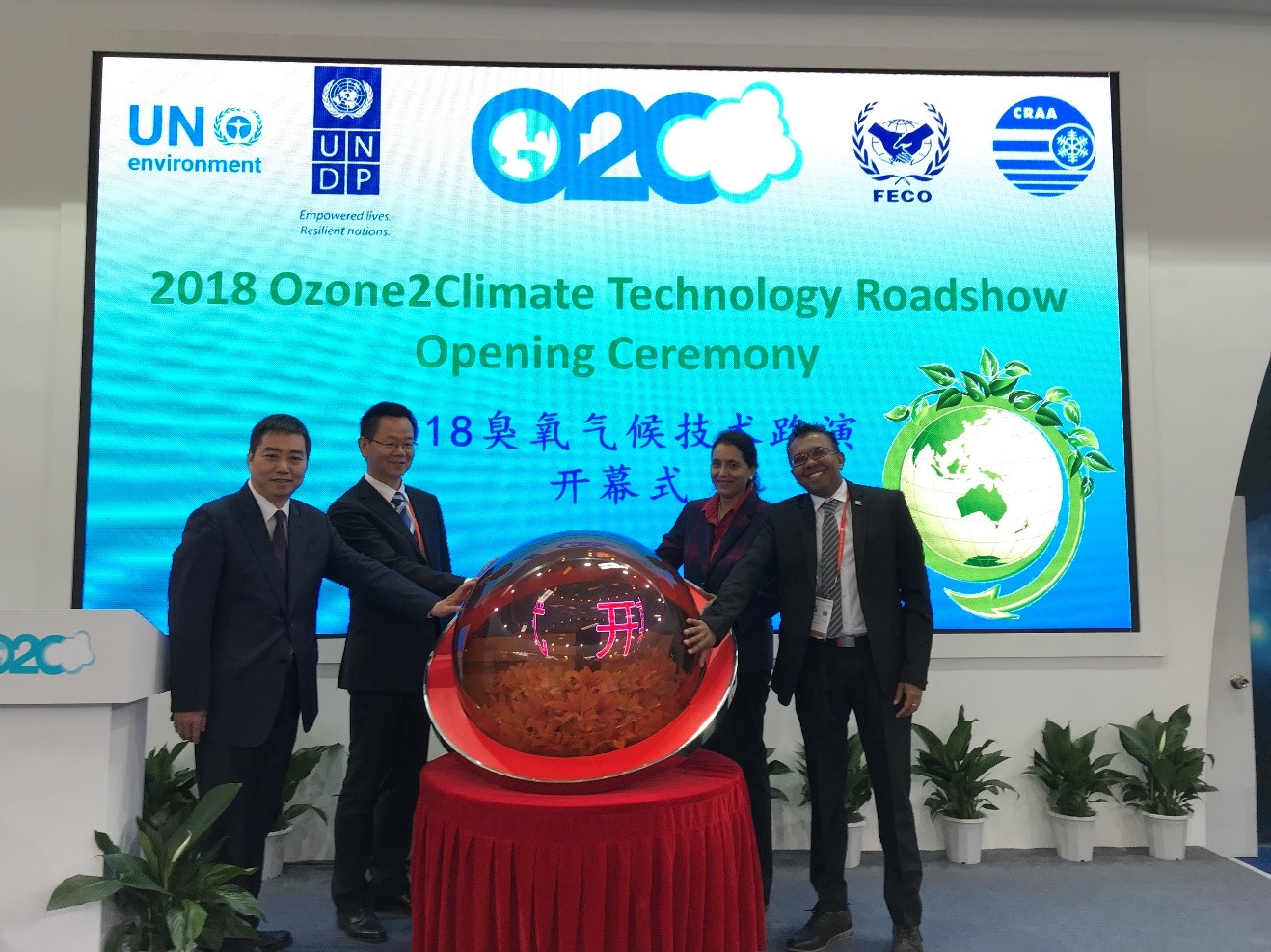--- Ozone2Climate Technology Roadshow ---
April 9 – 11, 2018, Beijing -- The three-day “2018 Ozone 2 Climate Industry Roadshow” was held at the Beijing International Center from April 9 to 11, with the aim of exhibiting ozone friendly technology and advocating for ozone layer protection through phasing out Ozone Depleting Substance (ODS) based technology.
Around 50,000 participants including, universities, research institutions, air conditioning manufacturers, companies and visitors attended the annual event which was co-organized by the United Nations Development Programme (UNDP), the United Nations Environment Programme (UNEP), Foreign Economic Cooperation Office, Ministry of Environmental Protection (MEPFECO) and China Refrigeration and Air-Conditioning Industry Association (CRAA). The exhibition featured Zero- Ozone Depression Potential (ODP), lower- Global Warming Potential (GWP) alternatives with improved energy efficiency of final products as compared to ODS based technology.
Mr. Devanand Ramiah, Deputy Country Director of UNDP China, delivered opening remarks on behalf of UNDP for the exhibition and the Moon-Tech Demonstration Project Award. He emphasized that through the joint efforts of recipient countries and in close coordination with the secretariats of the Multilateral Fund for the Implementation of the Montreal Protocol (MFL) and the Global Environment Facility (GEF), UNDP has implemented more than 2,496 projects that have eliminated 70,321 ODP tons of HCFCs per year and achieved cumulative climate benefits equivalent to 6.48 billion tons of carbon dioxide emissions. “Furthermore, UNDP also promoted innovative solutions for environmentally friendly alternatives in around 120 countries” He added.
One such innovative solution for ozone friendly technology was a demonstration project implemented by Moon-Tech, Foreign Economic Cooperation Office (FECO) and UNDP. During the implementation between 2011 and 2013, UNDP provided technical assistance to Moon-Tech and 250 tons of HCFC-22 (one type of ODS) were eliminated, while Greenhouse Gas (GHG) emissions reduced the equivalent of 425,000 tons of CO2, which contribute to the climate change.
The innovative part of the project is that Moon-Tech uses natural refrigerants such as ammonia/CO2 cascaded refrigeration systems to replace HCFCs in industrial and commercial refrigeration. Moon-Tech is the first enterprise in China to carry out the CO2 subcritical application. The CO2 system is environmentally friendly and saves energy.
This UNDP-managed demonstration project received the 2017 Exemplary Project Ozone Award at the 80th ExCom (Executive Committee) in Montreal. During the Roadshow, Mr. Devanand Ramiah congratulated Moon-Tech and highly appreciated the contributions that the enterprise has made for the ozone layer and the environment.
Since 1991, UNDP has cooperated with local governments and enterprises in about 120 countries in the world in the field of the implementation of the Montreal Protocol, supported those countries in fulfilling the commitment of protection and regeneration of ozone layer, and at the same time, fulfilled the obligation of improving energy efficiency under the framework of Montreal Protocol.
As a leading international implementing agency in phasing out ODS, UNDP China maintains good cooperation with the Chinese government, especially with FECO, in the solvent sector and the commercial and industrial sectors. In the first stage of phasing out HCFCs, more than 9,400 Metric tons of HCFCs were phased out in the two sectors. It is expected in stage II, more than 14,300 Metric tons of HCFCs will be phased out through UNDP projects in solvent and ICR sectors by 2026. Due to this great achievement, it was decided at the 80th ExCom that more than 23 million USD will be funded for China to further phase out HCFCs to ultimately protect the ozone layer.
As mentioned by Mr. Devanand Ramiah during the 2018 Ozone2Climate Industry Roadshow, in the future, UNDP will keep its commitment to phasing out ODS effectively by using both ozone friendly technology and innovative methods, and advocate for protecting the ozone layer, contributing to ozone recovery.

 Locations
Locations



